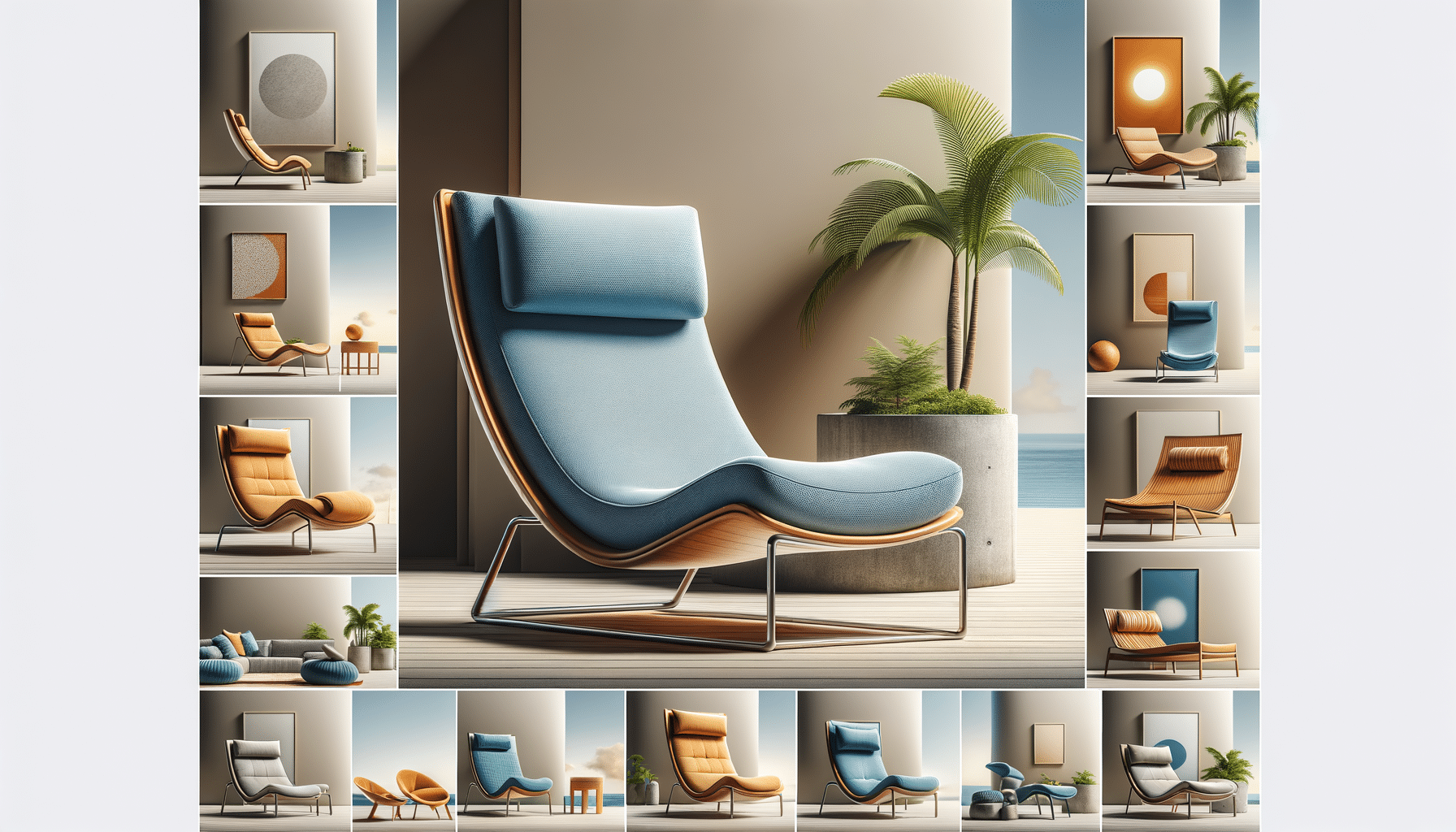Exploring the Comfort and Style of Lounge Chairs
Discover the multifaceted world of lounge chairs, where comfort meets style in various designs and materials.

The Evolution of Lounge Chairs
Lounge chairs have a rich history that reflects the evolution of design and comfort. Originating from the chaise longue of the 16th century, these chairs were initially a symbol of luxury and leisure, reserved for the affluent. Over time, they have become an essential part of modern living spaces, offering both functionality and style.
The transformation of lounge chairs is marked by the introduction of different materials and design philosophies. From the opulent, ornate styles of the past to the sleek, minimalist designs of today, lounge chairs have adapted to changing tastes and technologies. This evolution is not just about aesthetics; it also involves improvements in ergonomics and materials that enhance comfort and durability.
Today, lounge chairs are crafted from a variety of materials, including leather, fabric, metal, and wood. Each material brings its own set of characteristics, influencing the chair’s appearance, comfort level, and maintenance requirements. The choice of material often reflects the intended use of the chair, whether it’s for indoor relaxation, outdoor lounging, or as a statement piece in a living room.
Materials and Designs: Choosing the Right Lounge Chair
When selecting a lounge chair, the material and design are crucial considerations. Each material offers distinct benefits and can significantly affect the chair’s functionality and style.
- Leather: Known for its durability and classic appeal, leather is a popular choice for those seeking a sophisticated look. It ages well and can add a touch of elegance to any room.
- Fabric: Offering a wide range of colors and patterns, fabric lounge chairs are versatile and can be tailored to match various interior designs. They provide a softer feel and are often more affordable than leather options.
- Wood: Wooden lounge chairs exude a natural charm and are ideal for rustic or traditional settings. They can be paired with cushions for added comfort.
- Metal: Metal frames are often used in modern designs, providing a sleek and industrial look. These chairs are typically lightweight and easy to maintain.
Designs range from traditional to contemporary, with options like recliners, swivel chairs, and chaise lounges. The choice depends on personal preference and the specific needs of the space. For instance, a recliner might be perfect for a home theater, while a chaise lounge could add a luxurious touch to a bedroom.
Lounge Chairs for Different Spaces
Lounge chairs are versatile pieces that can enhance the comfort and aesthetic of various spaces. Whether indoors or outdoors, the right lounge chair can complete the look and feel of an area.
Living Room: In the living room, a lounge chair can serve as a focal point or a complementary piece to a sofa set. It provides additional seating and can be used for reading, watching TV, or simply relaxing. Pairing it with a matching ottoman can enhance the comfort and functionality of the space.
Bedroom: A lounge chair in the bedroom offers a cozy spot for unwinding after a long day. It can be placed near a window for natural light or in a quiet corner for a private retreat. The choice of fabric and design should harmonize with the bedroom decor to create a cohesive look.
Outdoor Spaces: For outdoor areas like patios and gardens, lounge chairs made from weather-resistant materials are ideal. These chairs are designed to withstand the elements while providing a comfortable spot to enjoy the outdoors. Options like wicker or metal with waterproof cushions are popular choices.
Maintaining Your Lounge Chair
Proper maintenance is key to preserving the beauty and functionality of a lounge chair. Different materials require specific care routines to ensure longevity.
Leather: Regular dusting and occasional conditioning are essential for leather chairs. Avoid direct sunlight to prevent fading and use leather-specific cleaners to maintain its luster.
Fabric: Fabric chairs should be vacuumed regularly to remove dust and debris. Spot cleaning with mild detergent can address stains, and some fabrics may be machine washable.
Wood: Dust wooden frames frequently and use wood polish to maintain their shine. Protect them from excessive moisture to prevent warping or cracking.
Metal: Metal frames can be wiped with a damp cloth to remove dirt. Applying a protective coating can prevent rust and enhance their durability.
By understanding the maintenance needs of your lounge chair, you can ensure it remains a cherished part of your home for years to come.
The Impact of Lounge Chairs on Interior Design
Lounge chairs play a significant role in interior design, offering both aesthetic and functional benefits. They can transform a space, adding character and style while providing a comfortable seating option.
In modern design, lounge chairs are often used as statement pieces. Their unique shapes and vibrant colors can create visual interest and serve as conversation starters. Designers frequently use lounge chairs to introduce contrast or complement existing decor, balancing elements like texture, color, and form.
Lounge chairs also influence the layout of a room. Their placement can define areas within a space, such as creating a reading nook or a cozy corner for relaxation. This flexibility allows for creative arrangements that enhance the flow and functionality of a room.
Ultimately, the choice of a lounge chair should reflect personal style and the intended use of the space. By considering factors like material, design, and placement, you can select a chair that not only meets your needs but also elevates your home’s interior design.